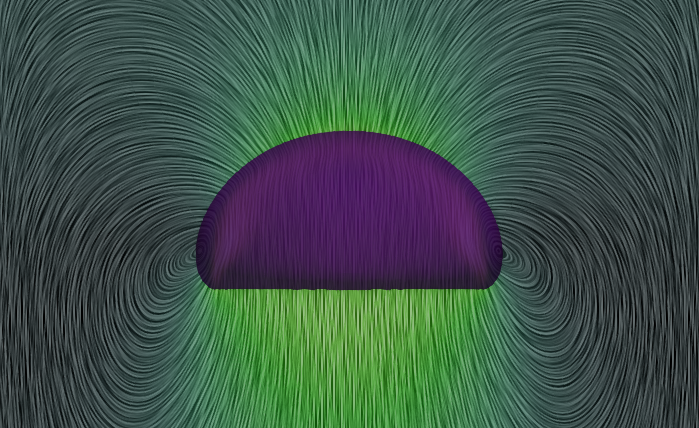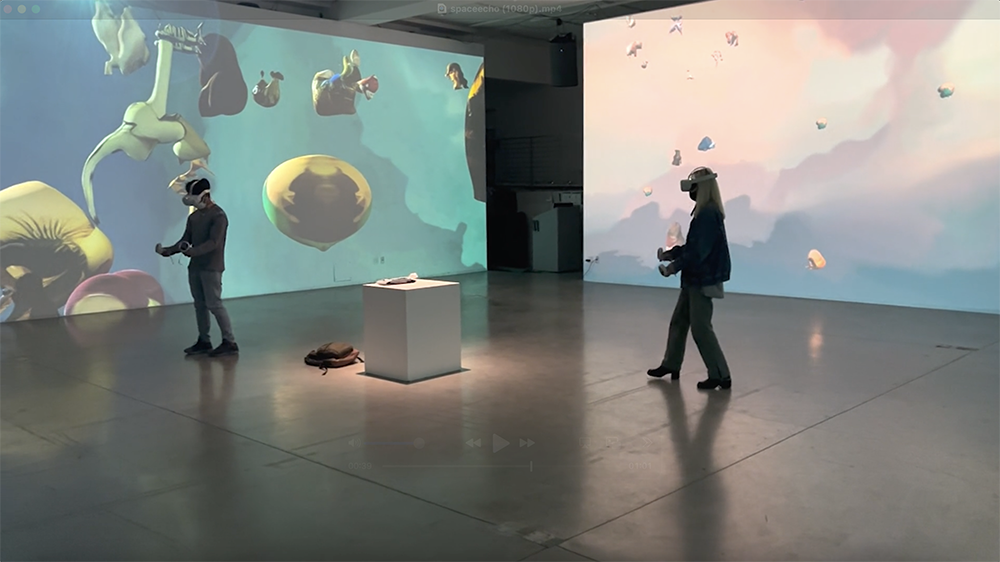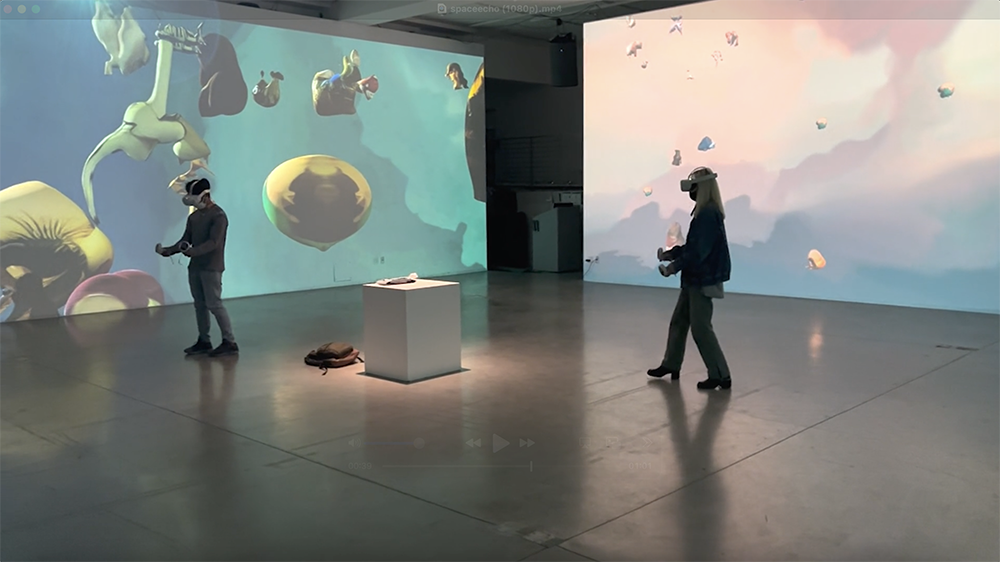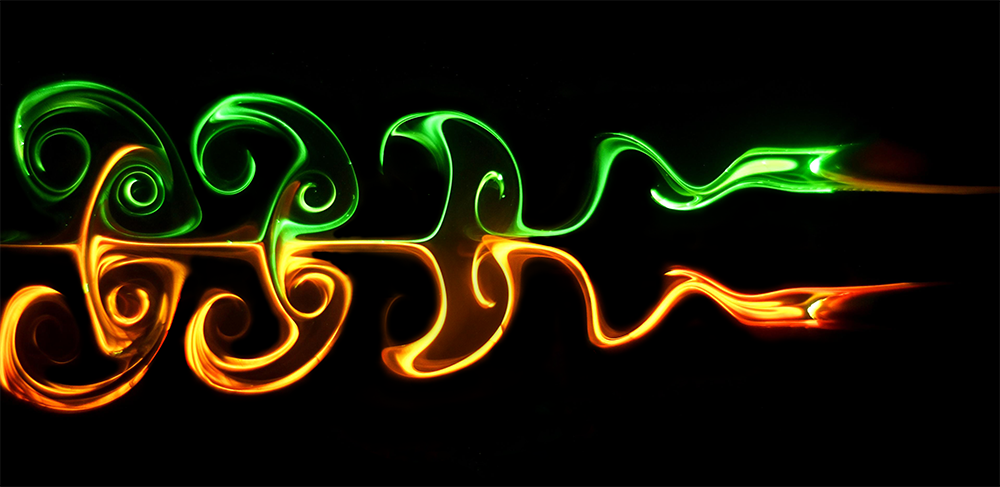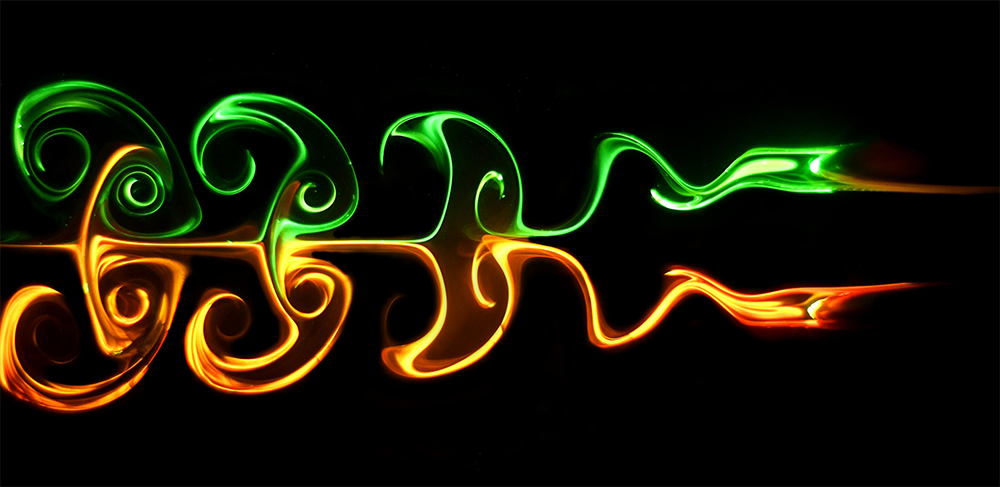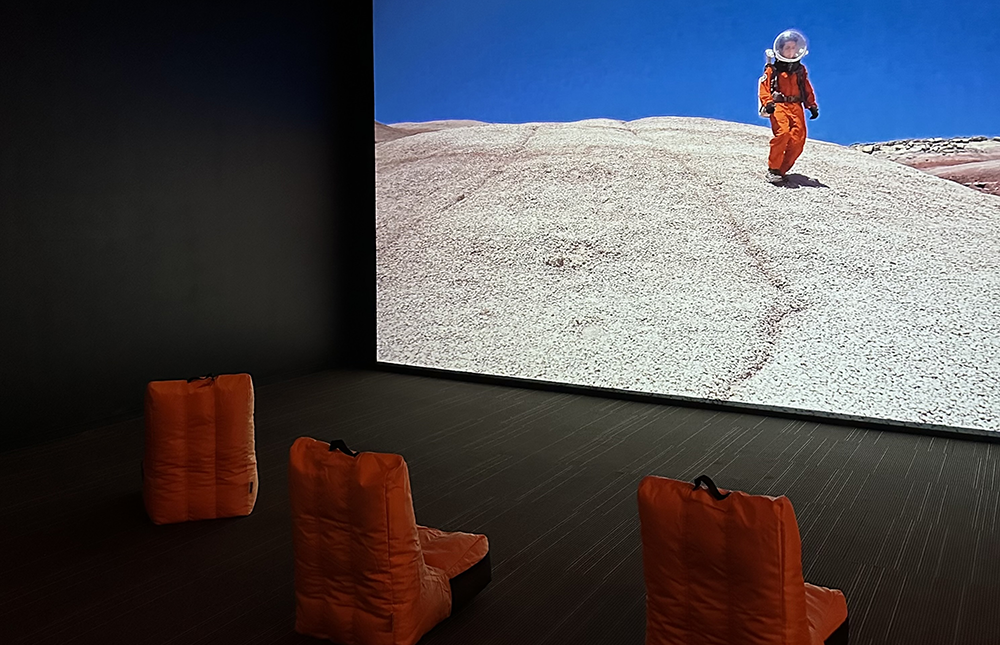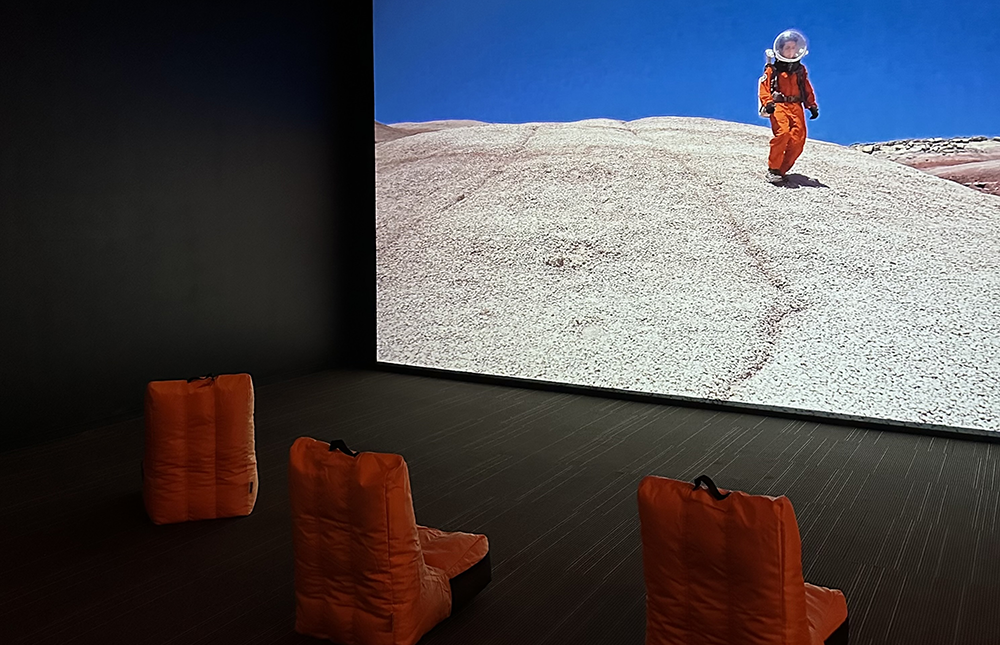A Gallery of Fluid Motion Inspired by Leonardo da Vinci
Below his 15th-century sketch of the machine now known as the aerial screw, Leonardo da Vinci mused that “if this screw device is well manufactured…and if the device is quickly rotated, the screw will engage itself in the air and it will rise up on high.”
More than 500 years later, the aerial screw and many of da Vinci’s other designs continue to inspire research, from real working drones to rigorous simulations.
Now, one such simulation—a swirling column of air currents around an aerial screw—is one of 34 pieces on display at The Leonardo, a science and art museum in Salt Lake City. As the second iteration of the Traveling Gallery of Fluid Motion, an initiative coordinated by the APS Division of Fluid Dynamics, the exhibit, Spiraling Upwards, explores the intersection of fluid dynamics, flight, and the works of da Vinci.
The Gallery of Fluid Motion began in 1983 to showcase the beauty of fluid mechanics. Scientists would submit videos and posters, and winning entries would be announced at the division’s annual meeting. But as the contest ballooned in popularity, its organizers sought new ways to grow. Now, a “traveling” version is exhibited at a museum in the annual meeting’s host city.
“Art and science merge into each other very organically” in fluid dynamics, says Azar Panah, a professor at George Washington University in Washington, DC, and the coordinator of the Gallery of Fluid Motion. “You can create artwork with fluids, but at the same time, when we are capturing art, we also learn about the science behind it.” As a result, the gallery isn’t only a way to reach scientists. “We can also teach the general public about science through art,” she says.
Building on the success of last year’s inaugural traveling gallery at the National Academy of Sciences in Washington, DC, Panah worked again with curators and artists Natalia Almonte and Nicole Economides to coordinate this year’s exhibit. Along with selecting pieces from the archives of the Gallery of Fluid Motion, Spiraling Upwards includes the works of artists selected through an open call.
“We wanted to expand [the exhibit] to artists that are working with the language of fluid dynamics, even if their work is not necessarily science,” says Almonte.
The curators avoided distinguishing scientists’ work from artists’ work, since both showcase “how science is beautiful, and how it can be seen in the context of art,” says Economides. “It was important for us to bring art pieces into the same space, to have the viewers see that they’re not so different after all.
Da Vinci helped inspire this approach. “Leonardo [was] an artist who did science experiments,” says Almonte. “Even though Leonardo was an innovator, he always presented himself as an artist first, and I think it was interesting for us to work with him in the back of our minds, with the spirit of science present but then it’s presented as artwork.”
After workshopping ideas for the theme, the team landed on Spiraling Upwards to invoke natural processes and flows—like Earth’s water cycle—and a sense of curiosity, creativity, and optimism. “We thought of it also as going up against gravity—lifting your hope, your emotions, and everything else as you pursue your dreams,” says Panah.
The main exhibition room, The Snake Eating Its Tail, is themed around the ancient symbol ouroboros and contains pieces that are designed to inspire viewers to see the world like da Vinci, who noticed that even repetitive cycles in the physical world vary each time. Waste and Wonder is a darker room filled with bright images and videos, designed to emulate both the emptiness and energy of outer space, while The Waiting Room is a transient, in-between area for reflection.
“This exhibit is an opportunity for someone to really sit and pause, to observe and make connections that aren’t obvious,” says Economides. “It’s designed to teach us to be more like scientists and artists—to stop and just exist for a moment so we can observe, think, and feel.
True to the theme of Spiraling Upwards, plans for future galleries are also on an upward trajectory. Panah says work is underway to curate pieces for two spaces during next year’s meeting in Houston—one in an art gallery and one in a science museum, enabling the traveling gallery to reach different types of audiences.
Panah says she hopes the Gallery of Fluid Motion and its traveling counterpart also help fluid dynamics scientists see the impact and beauty of their work. “If people from different backgrounds understand what you are doing, you can inspire others [and] generate new ideas and perspectives,” she says. “They can teach you about the future of your own work.”
The original version of this story appeared in APS News.
—Erica K. Brockmeier
Erica K. Brockmeier is the science writer at APS.
More Information
Visit Spiraling Upwards: the Traveling Gallery of Fluid Motion, from Nov. 1, 2024, to Jan. 31, 2025, at The Leonardo in Salt Lake City. View winning entries from past gallery contests anytime, or explore more resources related to the traveling gallery at The Leonardo, including interviews with the artists and scientists, DIY activities, and articles on da Vinci.



